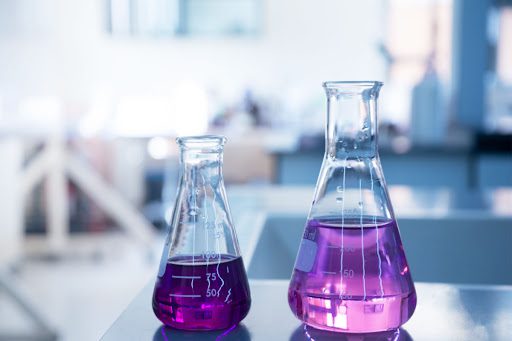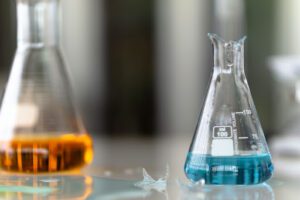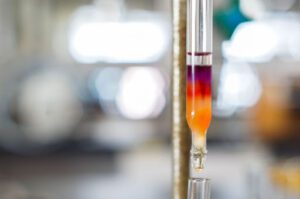
25
Aug '22

What Is the History of the Erlenmeyer Flask?
Even if you’ve never heard of Richard August Carl Emil Erlenmeyer, you’ve more than likely used his famous creation. Since its inception, the glassware flask that bears his name is one of the most common pieces of laboratory equipment used by chemists. Erlenmeyer flasks, also known as titration flasks, are an important piece of chemistry history that has helped scientists in a variety of fields. To learn more, here’s an overview of the history of the Erlenmeyer flask and why it’s still used to this day.
The History of the Erlenmeyer Flask Begins With Emil
The German chemist Emil Erlenmeyer was born on June 28, 1825. He originally enrolled at the University of Giessen to study medicine but changed to chemistry after attending the lectures of Justus von Liebig. Liebig was a major contributor to the field of chemistry, and Erlenmeyer would be too in time. After working with several influential figures throughout his life, including Robert Bunsen and Carl Remigus Fresenius, Erlenmeyer went on to assume professor positions at well-known German institutions.
During his time as a chemist, Erlenmeyer would make numerous discoveries that would change the field forever. He was the first individual to isolate certain organic compounds, and in 1862, proposed that double and triple bonds could form between carbon atoms. Perhaps his most famous contribution to chemistry was the Erlenmeyer Rule, which he developed while teaching at the Munich Polytechnic School in 1880. This rule states that alcohols in which the hydroxyl group is attached directly to a double-bonded carbon atom become aldehydes or ketones.
The Creation of the Erlenmeyer Flask
Of all the innovations and discoveries Emil is known for, none are as well known as the history of the Erlenmeyer flask. First created in 1860, he described the flask as having a cylindrical neck, a conical body, and a flat bottom. Compared to other beakers, the Erlenmeyer flask has a narrower neck and a more tapered body.
These differences grant the Erlenmeyer flask unique versatility that sets it apart from normal beakers. For instance, its narrow top can be easily sealed with a stopper to decrease evaporation and leakage. Furthermore, its distinct sides make it ideal for stirring, as it prevents the liquids from spilling out. These slopes also mitigate the evaporation of liquids during heating, as the vapors will condense on the sides of the flask. Erlenmeyer flasks are also well suited for heating thanks to their flat bottoms, which can be safely placed on heating mechanisms and won’t tip over as round-bottom glasses might.
The History of the Erlenmeyer Flask Beyond Emil
While Emil Erlenmeyer may have passed away on January 22, 1909, his famous flask continues to see widespread use in labs throughout the world. It is commonly used in the recrystallization process to purify chemicals and, thanks to the hot vapors in its filter funnel, is capable of avoiding premature crystallization. In general, these qualities make the Erlenmeyer flask useful in any laboratory situation which involves boiling liquid.
The history of the Erlenmeyer flask goes beyond chemistry labs. For example, glassware has found use in growing microbial cultures in microbiology fields. It’s also utilized as a means to store various solutions and chemicals, making Erlenmeyer flasks a highly versatile piece of laboratory equipment.
If you’re interested in acquiring high-quality Erlenmeyer flasks of numerous shapes and sizes for your laboratory, contact At-Mar Glass today. We produce various types of laboratory glassware, including our dry distillation apparatus, 18-inch glass dome, and much more.
Share:
Latest Post


Tips for Safely Disposing Broken Laboratory Glass

How to Properly Clean Laboratory Glassware

